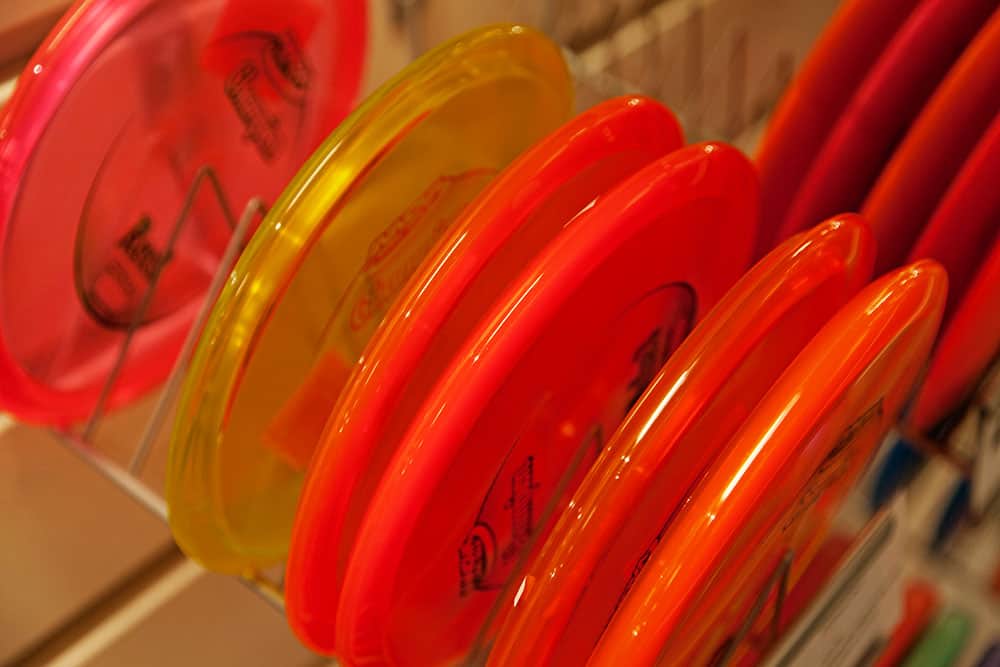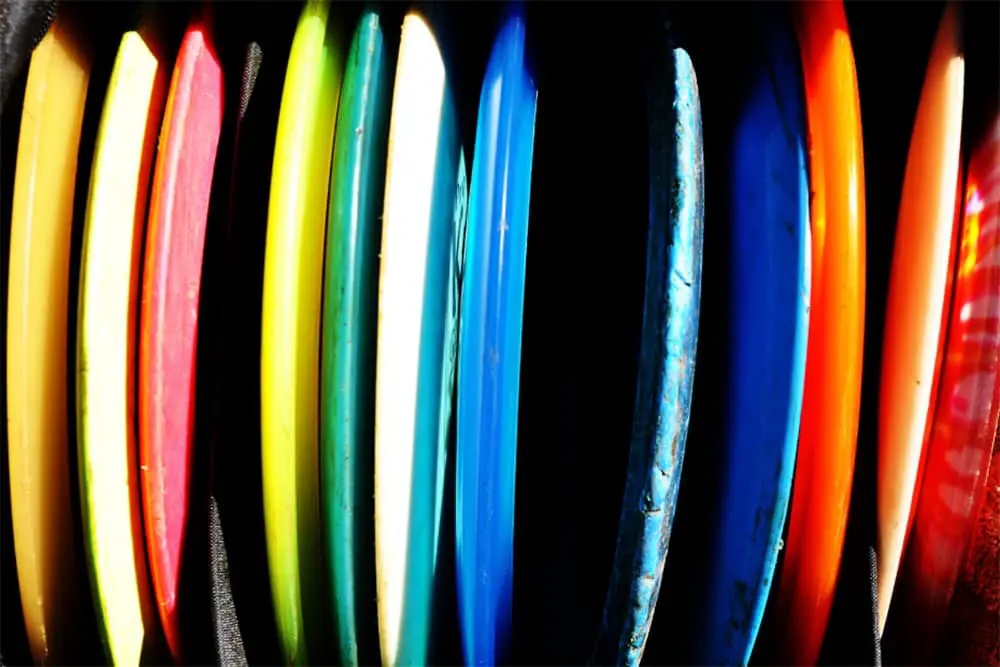In disc golf, as in standard golf, there are pieces of equipment more suited to beginners, intermediate players and excellent players within the amateur game, and then there are pieces of equipment that professionals use, to shave down their performance to the best it can be.
Within professional disc golf, though, there are some limits set to the weight of discs you can use.
The Professional Disc Golf Association declares that no discs weighing over 200 grams will be allowed for use in its competitions – so that’s your first parameter. Pros in PGDA competitions will use discs under 200 grams.

That doesn’t mean you can’t get discs of heavier weights than that – just that they won’t be allowed in PGDA competitions. The heavier discs can still be useful as training aids, but they’re not within the scope of discs used by pros in standard practice and competition.
Beyond that, what are we talking about? Well, it’s important to understand the relatively tiny gradations of weight in disc golf. Standard golf gives you a dramatic difference in weight from driver clubs, through the woods, hybrids, irons, wedges, and eventually the putter.
In disc golf, the whole range of discs from drivers, through mid-ranges, to putters, will usually encompass a difference of 30 grams maximum, between 150-180 grams (between 0.33 pounds and 0.39 pounds).
That’s the field within which all the differences in the world of disc golf, both in terms of the variation from a driver to a putter, and the difference between a beginner and a competitive pro.
0.06 pounds.
There are different types of plastic, and different circumference discs to take into account when you’re choosing your discs, but essentially, pros are likely to have a full complement of longer and shorter drivers, mid-range discs and putters.
And perhaps interestingly, it’s a mistake to think they’ll always use discs that are at the maximum end of the weight range within the PDGA allowances. Let’s take a look at what weights are usual for each of the different ranges of discs used by pros.
Drivers
Drivers start at around 150 grams, but beginners tend to go for something in the range of 165-169 grams because they’re easy to get good results with.
But it’s not so much the case that pros immediately go to the other end of the spectrum and use 175g gram discs because they go further. That would be to misunderstand what the extra weight is bringing to your drive.
Most pros actually use a driver that is under 170 gram discs, because they work perfectly well to deliver distance at that weight. They’re also useful if you’re throwing uphill or into slight to moderate wind – which is fairly common in disc golf, so they’re a good all-round weight for pros, just as they are for beginners.
Where the heavier weight drivers come into their own in professional play is not in going further, but in fighting the pressure of stronger winds and cutting through.
In those circumstances, pros won’t hesitate to pull their 172-175 gram drivers, because they know they can probably throw them with enough force to get effective use out of them.
So, when it comes to drivers, most pros use similar discs to most other players. But they have the option of going heavier if the circumstances require it, where beginners, unsure and untrained, might stop short of pulling a 175 gram driver.
Mid-range
Perhaps perversely, this is where you’ll find the most difference between beginners and pros. It’s also here that you’ll find pros using the heavier weights in their collection. When it comes to mid-range play, pros will regularly pull discs above 175 grams to give them both distance and control.
In fact, you can regularly find pro players using 178-180 gram mid-range discs to give them that combination of precision and distance.

When you start out in disc golf, your go-to mid-range discs are likely to be the 150 class, maybe 151-164 grams if you have the confidence.
It’s not usually until you’re reaching 60-80 meters (over 200 feet!) with your mid-range discs that you’d be advised to go up the scale and start using anything over 170 grams.
That gives you an idea of where some of the phenomenal power, control and skill of the professionals comes into its own.
Putters
Ironically, when it comes to finally “sinking” the disc into the basket, the difference recedes again, with anything over 170 grams being an appropriate choice for most players, from beginners to pros. There’s a logic there, in that by the time you’re pulling a putter disc, the task ahead of you is pretty similar, irrespective of your level.
Younger disc golfers might go for lighter putters, but anything from 170-172 grams is going to give you a decent shot at making the putt.
That said, the heavier you go (173-175 grams are a common ground for most amateurs and pros alike), the more likelihood you have of sinking the putt, as heavier weights get more resoundingly caught in the chains of the basket.
Also, pros will select the weight of their putter disc depending on the terrain and the wind. Higher winds will lead them to pull heavier putters, because the heavier the putter, the more wind it will cut through, meaning a more precise shot and a better chance of sinking the putt.
What is clear from all this is that professional disc golfers don’t have the vast swathes of weight difference accessible to them that traditional golfers do.
The major differences in the discs they use, compared to those chosen and used by disc golfers at much earlier stages in their career are often in the mid-section of the game, because this is where finesse and extra power can really make a difference to your shots.
Whereas drivers are all about simple distance, and putters are all about precision, however practiced you are, the mid-section is where being a pro can give you access to the weights – and moves – that set you apart from the crowd.
Pros will typically use heavier discs in the mid-section to improve their disc golf, not because they have access to different weights of disc, but because they have the expertise to use the heavier weights to their own game advantage.